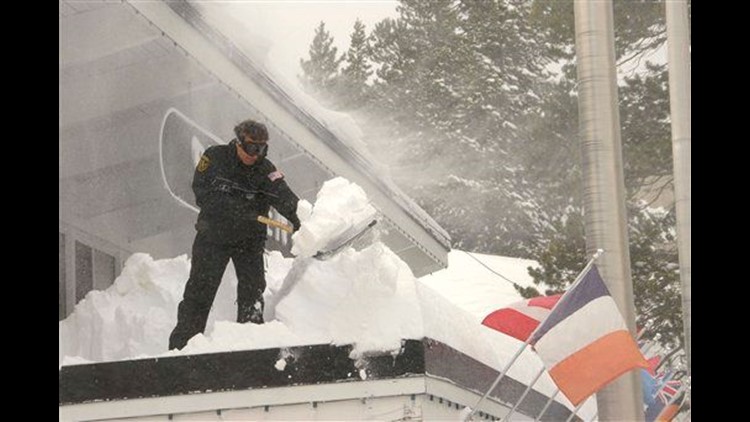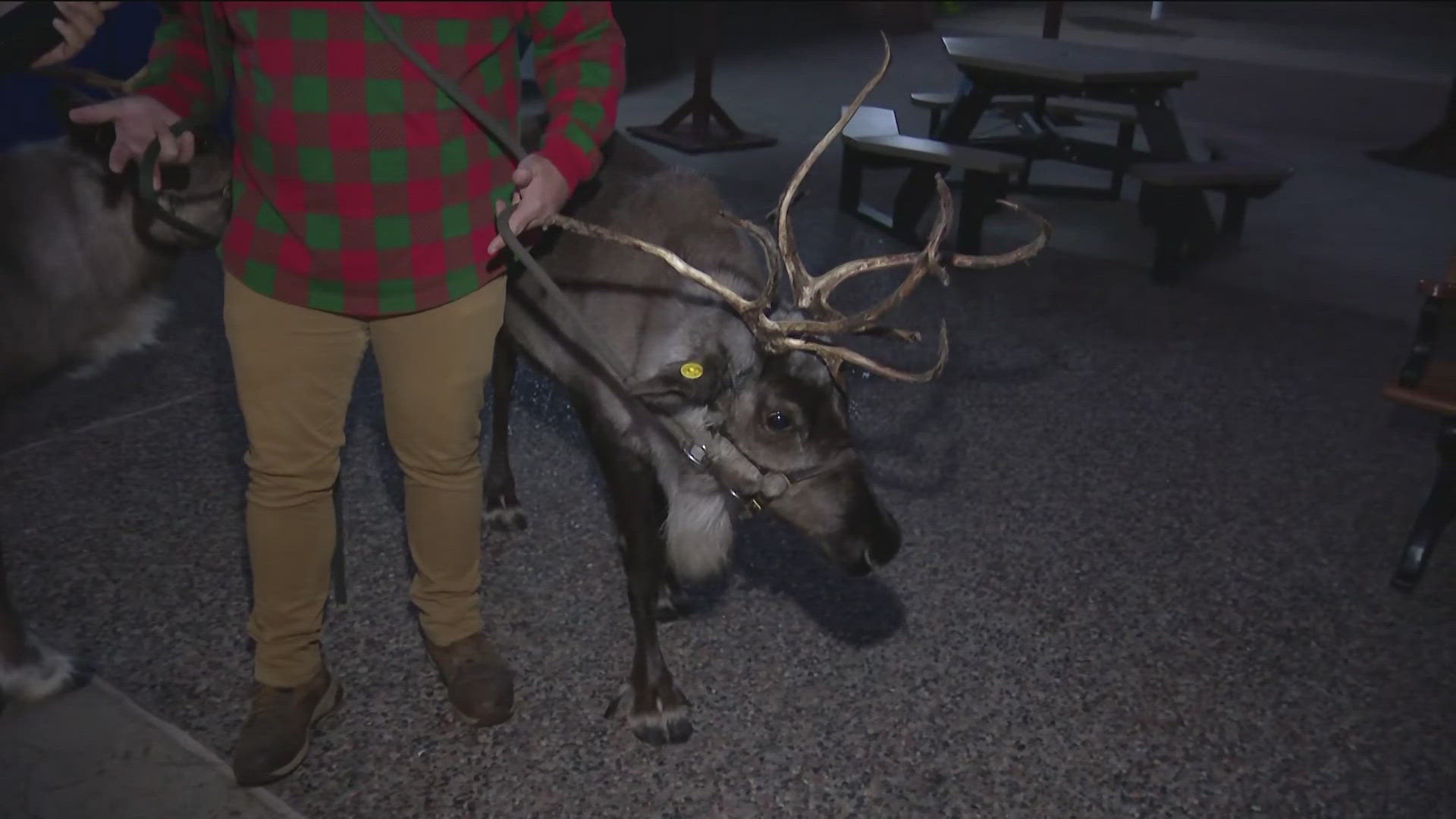SALT LAKE CITY (AP) — The winter and early spring have been extreme across the West, with record snowpacks bringing joy to skiers and urban water managers but severe flood risks to northern Utah, Wyoming and Montana.
And despite all the wet weather in the Rockies and Sierra Nevada, parts of eastern Colorado, New Mexico and Arizona are in severe drought and gearing up for what is forecast as a bad fire season. In New Mexico, some 400 fires, driven by relentless winds, have already raced across 315,000 acres.
Credit — or blame — for the extreme weather goes mostly to a strong La Nina, which is associated with cooler than normal water temperatures in the Equatorial Pacific Ocean and an atmospheric flow that's causing drier than normal conditions in the Southwest and wetter than normal in the Northwest..
"This winter has been fairly unusual," said Laura Edwards, a research climatologist at the Desert Research Institute in Reno, Nev., in what can only be considered an understatement.
Randy Julander, supervisor for the Utah Snow Survey, described more colorfully the disparity between the snow buried, flood endangered parts of the West and those that are parched and burning: "They're wishing they could get a little of what we have. (The wet weather) just continues to get worse. At this point, all you can do is open the chute, let her buck and hope your butt stays glued to the saddle."
Julander was referring to the coming melt with snowpacks at 200 percent of normal or higher throughout northern Utah. One lower-elevation area in the mountains 50 miles east of Salt Lake City is at 750 percent of normal — with another big storm headed to the region early this week.
"The sandbagging is in place. They've cleared the channels. Everybody is just sitting around chewing on their nails," Julander said.
In Colorado, the city of Denver and Loveland Ski Area are separated by a mere 75 miles. Yet, the city, east of the Rockies on the high plains, has had only 21.8 inches of snow this season, the second-lowest in history with records dating back to 1882. Loveland, at the top of the Continental Divide, entered the weekend within four inches of breaking its season snowfall record of 572 inches (some 49 feet, set in 1995-1996).
"It's almost a record low for one and a record high for another. You get the idea how extreme that is," said Kevin Houck, an engineer with the Colorado Water Conservation Board. "If I were a water manager, I'd be very happy about this."
Pat Mulroy definitely is.
She oversees operations at the Southern Nevada Water Authority and the Las Vegas Valley Water District, responsible for water to local agencies that collectively serve 2 million residents and nearly 40 million annual visitors
As recently as last fall, the plunging levels of Lake Mead outside Las Vegas were dangerously close to triggering a mandated "shortage" declaration on the Colorado River system, which would have required both Nevada and Arizona to reduce water use.
But because so much snowmelt will be flowing into the Colorado River this year, the U.S. Bureau of Reclamation announced recently it is releasing an extra 3.3 million acre-feet from upstream Lake Powell to Lake Mead. The additional flow into Mead is roughly 14 times the amount of Colorado River water Las Vegas and surrounding areas used last year.
"I'm delighted, absolutely delighted," said Mulroy.
In Utah, Snowbird Ski Resort set its all-time snowfall record two weeks ago with 711 inches — more than 59 feet. It could stay open as late as July 4.
The flip-side is that major flooding has become a worry at lower elevations in northern Utah, where snowpack is well above what it was during the massive floods of 1983 that caused $250 million in damage.
Crops were wiped out, homes and businesses damaged and State Street in downtown Salt Lake City became a river for two weeks when an underground pipe couldn't contain the flow of City Creek. Interstate 80 was flooded and levels in the Great Salt Lake rose within eight feet of the runways at Salt Lake International Airport.
"When it does finally turn warm and the snow starts melting, it will be like filling a thimble with a fire hose," said Julander. "It's going to come down pretty much uncontrolled."
A big melt-off in a short time frame would make situation dire.
In Wyoming, communities are already placing sandbags in anticipation of potential flooding. Last year, the state got a wakeup call when flooding damaged bridges, roads and homes and required the Wyoming National Guard to deploy 400 soldiers to help.
In Montana, Gov. Brian Schweitzer declared a flood emergency for one county in the northeastern part of the state where spring melt has caused flooding along the Milk River, particularly near the city of Glasgow and where the river meets up with the Missouri River.
In California, the wettest winter and spring in more than a decade is great news on various fronts. It prompted state officials to boost the amount of water available to agencies that supply 25 million California residents and almost a million acres of farmland, with Gov. Jerry Brown officially ending the state-imposed drought declaration.
Winter sports enthusiasts, in some locales, are still enjoying an amazing season. Several ski resorts around Lake Tahoe extended their seasons beyond the usual April 1 close date when four feet of snow fell in a single night in March. Squaw Valley intends to keep its lifts open through June.
More than 61 feet of snow has fallen in the Sierra Nevada this season — second-most on record to the 65 feet that fell on the high country in 1950-51.
"It's our longest season ever," Donner Ski Ranch spokesman Diogo Custodio enthused. "If we need to stay open until July 4, we will."
By then, Arizona hopes the monsoon season will have kicked in to alleviate severe drought conditions in the southern part of the state.
Federal land managers have yet to impose fire restrictions in Arizona, but it's a different story in New Mexico.
Three of the state's five national forests have imposed at least some restrictions. The Bureau of Land Management is cracking down in the southern half of the state and nearly a dozen county and municipal governments have imposed their own restrictions.
"Every time we have a La Nina weather pattern, we see similar conditions to what we have this spring," said Dan Ware, a spokesman for the New Mexico State Forestry Division. "The difference this year is the dryness."
There have been few spring days in New Mexico without red flag warnings, he said, and everyone is complaining about the wind and lack of rain.
___
Associated Press writer Catherine Tsai contributed to this report from Denver, Colo., Scott Sonner from Reno, Nev., Susan Montoya Bryan from Albuquerque, N.M., Matt Volz from Helena, Mont., Felicia Fonseca from Flagstaff, Ariz. and Bob Moen from Cheyenne, Wyo.
Copyright 2011 The Associated Press.



